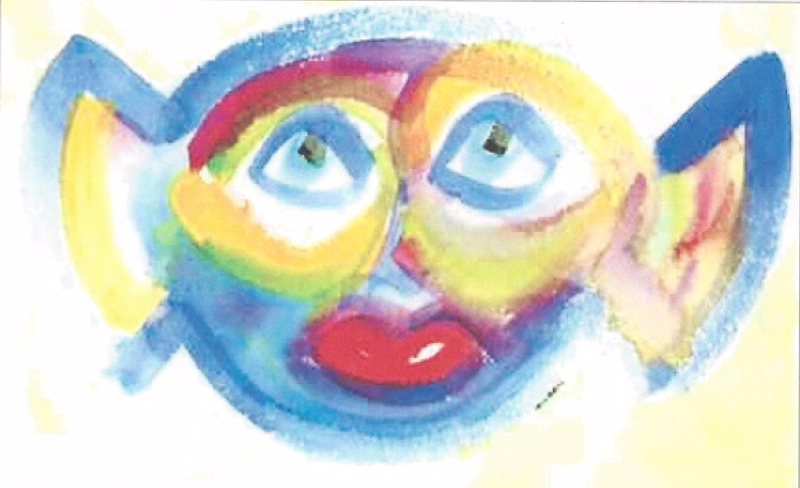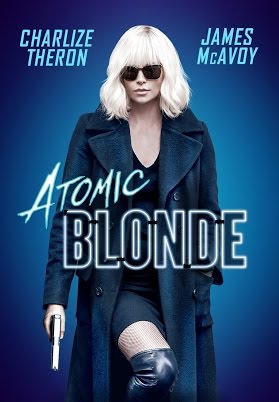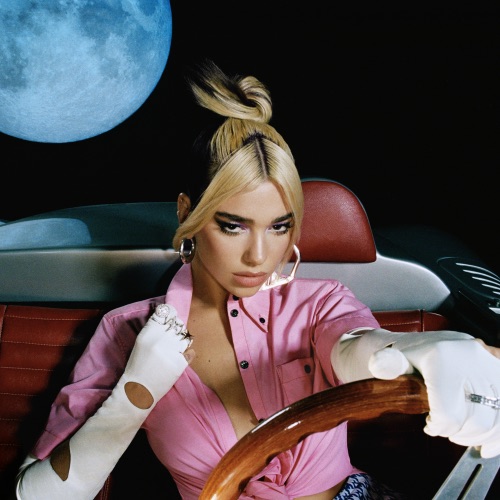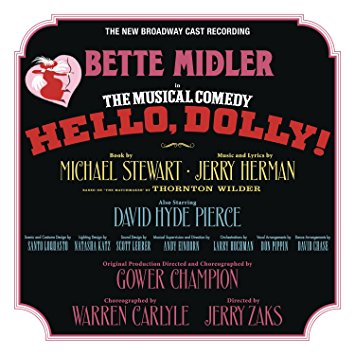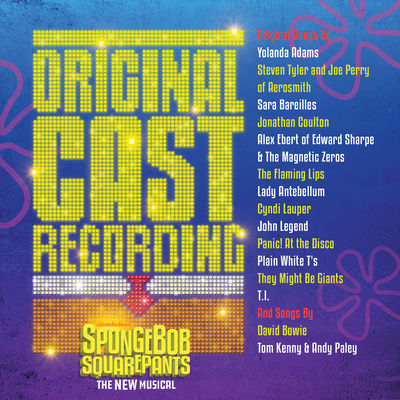'BY THE WAY, MEET VERA STARK' - MAID TURNED MOVIE STAR
 Monday, March 4, 2019 at 3:20PM
Monday, March 4, 2019 at 3:20PM  From left: David Turner, Jenni Barber, Carra Patterson, Jessica Frances Dukes, Heather Alicia Simms and Manoel Felciano
From left: David Turner, Jenni Barber, Carra Patterson, Jessica Frances Dukes, Heather Alicia Simms and Manoel Felciano
HENRY EDWARDS - NEW YORK - March 3, 2019
“Schizophrenic.”
That’s how Lynn Nottage, the first female playwright to win the Pulitzer Prize for Drama twice, characterizes a body of work that includes her two socially relevant prize-winners, “Ruined” (2009) and “Sweat” (2017).
“Ruined” conveyed the harrowing message that rape is a profoundly damaging weapon of war and must be stopped; “Sweat” dramatized the disaffection and racism of white working-class voters in the rust belt of Pennsylvania occurring eight years before the election of Donald Trump.
Schizophrenia?
Nottage’s antic social comedy, “Fabulation, or the Re-Education of Undine,” preceded “Ruined,” and her satirical comedy, “By the Way, Meet Vera Stark,” came directly afterwards.
“Fabulation” imagines the downward spiral and subsequent reemergence of African American publicist Undine Barnes Calles who was born Sharona Watkins in the Brooklyn housing projects. Undine shares her newly minted first name with the ruthless, repugnant, vacuous anti-heroine Undine Spragg of Edith Wharton’s 1913 brutally satirical novel, “The Custom of the Country.”
Wharton wasn’t fooling around when she created her Undine; Nottage’s comedy has more laughs.
“By the Way, Meet Vera Stark” renders a back story for fictional Depression-era maid-to-movie star Vera Stark at a time when African American actresses were cast, if cast at all, almost exclusively as stereotypical maids, slaves or mammies.
Nottage is this year’s Signature’s Residency 1, affording the dramatist the opportunity to revisit both comedies from her so-called “frivolous period,” each in a new production.
“Vera Stark,” under the direction of Kamilah Forbes, executive producer of the Apollo Theater, currently holds court at Signature Center’s Irene Diamond Stage.
Having seen the original 2009 staging at Second Stage Theater twice, I remember the comedy as a cheeky original that went out of its way not to play by the conventional rules.
Nottage credits viewing the delectably sordid, 1933 pre-Production Code-era studio film, “Baby Face,” on the Turner Classic Movies cable network as her inspiration.
The racy black-and-white melodrama starred a 26-year-old Barbara Stanwyck as steel town prostitute Lily Powers (her father was her pimp). "Bound-for-bigger-things,” the power-hungry blonde sleeps her way to the top in New York City during the worst year of the Great Depression.
What caught Nottage’s eye was the fact that Stanwyck’s character had a “BBF” (Best Black Friend), Chico. (A BBF was the leading white actress’s best friend; they are supposed to be “equals,” but the BBF exists strictly to support her white friend, aiding her in eventually overcoming some personal obstacle).
Unlike other movies of the period, BBF Chico was pretty, wore terrific clothes, had a real and far less stereotypical friendship with Stanwyck, enjoyed a substantial amount of screen time and portrayed a maid only in those scenes when Stanwyck was making her way into high society - blacks were automatically denied the opportunity to engage in any behavior that implied equal status.
Nottage had never heard of the African-American singer and actress Theresa Harris who portrayed Chico. Researching the actress’s life, the playwright discovered that Harris had appeared in 60 movies, but along with the other nearly invisible black actresses in the years before the civil rights movement, she had been so marginalized that information about her was virtually nonexistent.
Nottage decided to make amends by loosely modelling her comedy about beautiful, smart, funny and willful actress Vera Stark on her ruminations about the exceedingly difficult show-business lives typical of Theresa Harris and other forgotten Depression-era black actresses, and "Vera Stark” began to take shape as part screwball comedy and part bittersweet reverie about the limited options open to African-Americans in 1930s Hollywood.
Nottage’s Vera Stark (Jessica Frances Dukes, who was amazing and terrifying as the burnt-to-a-crisp mom in “Is God Is”) works as the BBF to famed actress of the moment, Gloria Mitchell (Jenni Barber).
The on-screen Gloria is the personification of blonde innocence, and the public affectionately knows her as “America’s Little Sweetie-Pie.”
The off-screen Gloria is no sweetie-pie. She's a vain, booze loving, melodramatic, self-absorbed peroxide blonde with embarrassingly affected, grand lady diction.
Fearing she is being aged out of her “little sweetie pie” screen persona, the 28-year-old harbors the conviction she can stay afloat in Hollywood if she had the opportunity to portray an adult character. That explains her determination to accept the offer to play Marie, “the beautiful but tragic octoroon prostitute,” in “The Belle of New Orleans,” a cornball 18th-century romance epic set in the Deep South.
But to her great horror, she has to audition, and BBF Vera and she are working on her lines, not the easiest of tasks for bubbleheaded Gloria.
The actress depends completely on Vera and it appears their friendship long predates their present arrangement. (We later learn they grew up together on the vaudeville circuit, and are cousins or possibly half-sisters; if so movie-land’s very white Gloria is, in actuality, half black, and only white actors are permitted to portray octoroons).
“The Belle of New Orleans” also contains a perfect role for Vera, that of Marie's “devoted servant and companion,” her slave Tilly.
Even though Vera has vowed never to portray a slave, unlike slave characters in other movies, Tilly is different – vastly different. She has dialogue!
Try as she may, Vera has never been granted an audition. She is around the same age as Gloria, but hasn't lost hope that something bigger and better than her current job is bound to happen. And now a big break just might be close at hand.
 Jessica Frances Dukes and Jenni Barber
Jessica Frances Dukes and Jenni Barber
Riddled with fantasies of a successful future, she sets out from Gloria’s art deco mansion (sparingly designed by Clint Ramos) and heads home to the plain, small rooming-house flat she shares with two other aspiring black actresses, plump Lottie McBride (Heather Alicia Simms), and slender and sexy Anna Mae Simpkins (Carra Patterson).
Nottage’s satirical approach sends up the cultural stereotyping white culture enforced on black actresses in 1933, and in many instances has yet to stop.
Actress-turned-seamstress Lottie is pretty, heavyset, cynical and witty. The once-slender performer in Broadway revues tells Vera "I spent seven years trying to eat my way into Hollywood's demand that women like me gotta be high yella mellow or look like you crawled outta Mississippi cotton patch to get work. So here I is, looking like someone's mammy and the closest I've gotten to pictures is sitting in the back row of the cinema."
In her desire to navigate the racial barrier and obtain work, unemployed, pale-skinned “high yella mellow” vamp Anna Mae softens her consonants and opens her vowels, totally denying her true identity in an attempt to pass as a Brazilian bombshell.
The next day, while Gloria is undergoing her audition for “The Belle of New Orleans,” Vera meets Leroy Barksdale (Warner Miller), a slickly dressed chauffeur and musician who works for Maximillian von Oster (Manoel Felciano), the idealistic but pompous European “genius” director of “The Belle of New Orleans.”
Leroy belongs to the New Negro movement and believes black performers should produce their own art rather than put themselves at the mercy of the Hollywood studios. He is proud, he tells Vera, to be working towards his own success as a musician without the (often sexual) compromises made by black women.
Meanwhile, in her determination to cinch the role of Marie, Gloria invites attractive, well-groomed and wealthy studio executive with less-than-stellar social skills Frederick Slasvick (David Turner) and director von Oster to a party at her mansion.
Lottie joins Vera as a second maid; Anna May turns up on von Oster’s arm masquerading as an Argentinian (with a horrible accent); and since Leroy is von Oster’s driver, he also pops in, only to get propositioned by America’s not-so-sweetie pie Gloria.
As the evening progresses Von Oster and Slasvick get into a knock-down-drag-out battle about art versus commerce.
The director plans to make an “authentic” story about a brothel in the south, but studio chief Slasvick knows that depictions of prostitution and intimacy between the races both violate the Hays Code.
“People need their history to seem heroic . . . if you're gonna give em slaves, give them happy ones,” he insists.
“I want my Negros to be real, to be Negroes of the earth,” von Oster counters.
Aware they are expected to "perform" their race and all the suffering white people assume comes with it, if they want to work in movies, Vera, backed up by Lottie, rolls up her sleeves and delivers a jumbo-sized helping of black misery.
Nottage's script directions call for the first act to be performed in the style of a screwball comedy. The mid-1930s film genre, a blend of the wacky and the sophisticated, is characterized by fast-paced verbal dueling and witty sarcastic dialogue, zany, fast-paced and unusual events, and screwy plot twists.
Until the first production of “Vera Stark,” I had never seen black actors perform screwball comedy. The form often reflected a Depression-era fascination with the upper classes, thus denying blacks the opportunity to participate.
Harris pushes her talented cast to play and fast and hard in the screwball comedy style. But “Vera Stark” is a challenging high-wire act riddled with mercurial shifts in tone. Nottage’s characters play at being caricatures and often are caricatures. Harris’s super-energized direction encourages the actors to struggle determinedly to generate laughter – not the easiest way to breathe zany life into a comedy that refuses to play by the conventional rules, and one that works irregularly in starts and stops.
 Heather Alicia Simms and Jessica Frances Dukes
Heather Alicia Simms and Jessica Frances Dukes
In 2003, 40 years after its 1933 release, “The Belle of New Orleans” has grown into a beloved classic, and Act Two begins as the participants and audience members at a 2003 “Remembering Vera Stark” symposium watch the movie’s tear-jerking closing death bed scene. (Five cast members now appear in different roles.)
Katherine Freer’s version of “genius” Maximillian von Oster’s “genius” black-and-white masterwork brings us Gloria Mitchell’s sickly octoroon heroine, Marie, on her death bed. Tears pour from the eyes of Vera Stark’s comforting maid and confidante, Tilly. Also standing by are Anna Mae as a thick-accented Frenchwoman (what else?) and Lottie as a slave (what else?).
In Tony Gerber’s original version, the camera slowly dollied in on Vera’s face, creating an enigmatic close up that transformed the unknown Vera Stark into a star.
Since Nottage is a film buff, it was my hunch she was recalling “Queen Christina,” shot in the same time period as the fictional “The Belle of New Orleans,” and its famous closing shot, showing Christina standing as a silent figurehead at the bow of the ship bound for Spain.
Prior to shooting, director Rouben Mamoulian suggested that Greta Garbo think about nothing so that the final close up of her face could be a "blank sheet of paper," allowing audiences to fill in the blank on their own.
To this day, anyone who sees the movie is transfixed by the mystery locked in Garbo’s eyes.
This time around, Katherine Freer’s film left me little to think about.
The symposium features three cultural critics of color: overly enthusiastic, self-important, filmmaker from Oakland, panel moderator Herb Forester (Warren Miller); staunchly opinionated poet, journalist and performer Afua Assata Ejobo (Carra Patterson); and combative media-gender studies professor Carmen Levy-Green (Heather Alicia Simms).
The academics amusingly but fatuously pontificate on the significance of Vera Stark’s “ground-breaking” screen performances, legacy and 30-year disappearance.
“What happened to Vera Stark?” Herb Forrester repeatedly demands with more than a touch of sensationalism.
Is Vera, like any performer, a creature of ego? Has she made compromises in her lifelong pursuit of applause? Did Vera silently comment on her own oppression within seemingly “mammy-ish” roles? Or was she simply trying to get work, and get by? And did she lose a piece of her soul in the process?
Those are the questions the panel is trying to answer with lots of attitude and an exasperating lack of insight.
Afua and Carmen share dueling theories: Afua thinks Vera overdosed on pills and liquor in a Reno hotel room; Carmen is convinced she spoke to Vera in a Santa Monica homeless shelter. Herb doesn’t really care.
Nottage’s heavy handed satire demonstrates how self-important academics currently utilize facts and militant political correctness to fit their individual theories.
As evidence, they turn to Vera’s last public appearance as a guest on a tacky 1973 Las Vegas television interview show, “The Brad Donovan Show.”
Fatuous host Brad Donovan (Warner Miller) delivers his best Merv Griffin impersonation; Brad’s guest, Peter Rhys-Davies (Manoel Felciano), is a stoned British rock star who can hardly sit up straight. But it’s the last recorded appearance of Vera Stark that boggles the mind.
Her film career, having long since expired, has turned up to plug a Vegas revue for which she has been pulled out of enforced retirement.
The 28-year-old Vera was upbeat, unwavering and ambitious, but necessarily guarded, the result of always being conscious of her precarious position as a black woman attempting to achieve success in a white world.
Flamboyantly dressed in Dede M. Ayite’s overpowering, multicolored dress, 68-year-old Vera (monumentally portrayed by Jessica Frances Dukes) is a wily, fierce, hard-edged grande dame with a hearty appetite for booze and nicotine.
Resentful but resplendent, the hardened old timer destroys every pompous doomed-star-who-should-have-been theory about the lack of success that followed her breakthrough performance in “The Belle of New Orleans”: “I played a slave woman bound to her mistress, and here all of these years later, I find myself bound to Tilly. I wish I could shake that silly little wench out of me.”
Which is probably the truth. And a tragic one if you think about it.
Pulling a fast one, in the style of TV talk shows and has never gone out of style, Brad Donavan brings Gloria Mitchell (Jenni Barber) now a wealthy London matron, yearning for a comeback and more than willing to fight Gloria for the spotlight.
“Gloria, you were one of the biggest and brightest stars in Hollywood,” says Brad, “and Vera well you…you lit up the scenes with your memorable sassy presence.”
Vera is not exactly thrilled. But show business is show business, and the aged warriors even go so far as to reprise their ancient vaudeville act and perform “I’m Just Wild about Harry.”
In an affecting coda set in the 1930s, on the last day of shooting, Vera asks Gloria for a tiny change in the final scene of “The Belle of New Orleans.” It’s that adjustment that for better or worse ensures Gloria’s legacy.
Nottage wastes far too much time creating mirthless parodies of academic pretensions and dimwitted TV talk shows. At its root, “Vera Stark” provides a telling commentary about the vicissitudes and cruelty that lurk in the unpredictable future. Gloria, sexy and white, succeeds; Vera, equally as ambitious, is a ground breaker and talented actress thwarted by systemic racism in both society and the film industry who winds up empty-handed.
"Vera Stark" is the personification of trickiness and director Harris and her industrious company have engaged in a valiant but unsuccessful struggle to amuse and make us care.
 Jessica Frances Dukes and Jenni Barber
Jessica Frances Dukes and Jenni Barber
 Henry Edwards | Comments Off |
Henry Edwards | Comments Off | 
